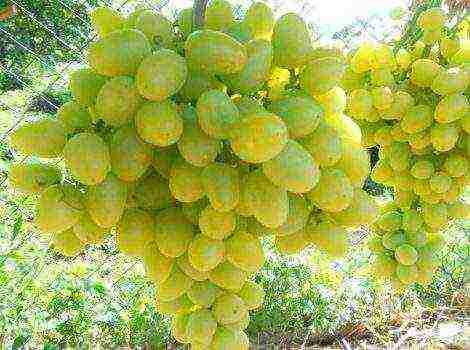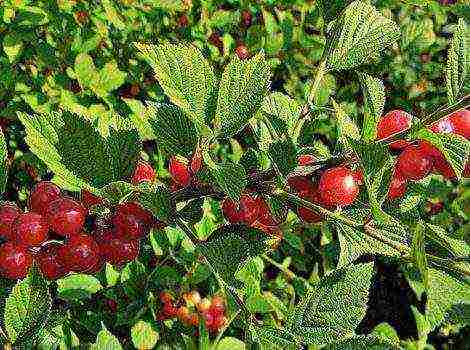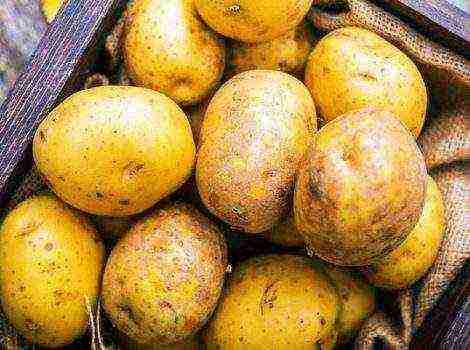Content [show]
Not sure which seedlings of rhododendrons to buy for growing outdoors? Take note of our list of hardy varieties.
Rhododendron is, without unnecessary exaggeration, a luxurious shrub, loved by flower growers no less than roses, peonies and hydrangeas. No wonder we included it in the list of 30 delightful ornamental plants for the garden.
Among the huge variety of rhododendrons, you can find plants for every taste: shrubs or small trees, with a heady aroma or barely perceptible, with large flowers or compact ones. In addition, almost all rhododendrons thrive with a little shade.
Check out the list of 10 more beautiful shade-tolerant plants.
Unfortunately, the eastern origin of the rhododendron often frightens off the inhabitants of the middle lane. What if it doesn't bloom, or, even worse, won't endure the frost and die?
If you have long dreamed of planting a rhododendron seedling on your plot, but did not dare because of the cold winters, consider that the problem is solved! We have compiled a selection of 10 gorgeous winter-hardy rhododendrons that can withstand temperatures down to -25 ° C and even lower.
For all its advantages, rhododendron cannot boast of a complete absence of shortcomings. Perhaps the main disadvantage of growing this plant in your garden is that all its parts: flowers, stems, leaves are poisonous. If there are children and pets on your site, be sure to take note of the list of poisonous ornamental plants popular among flower growers.
Grandmother (Babuschka)
Rhododendron Granny is as charming as its name suggests. It belongs to the Japanese azalea species. This undersized shrub is perfect for creating curbs and low hedges.
This azalea will appeal to lovers of lush inflorescences. Who can resist these bright pink double flowers?
| Flowering time | Bush height (cm) | Bush width (cm) | Distance between bushes (cm) | Peculiarities |
| May June | 20-50 | 20-50 | 20-50 | Growing slowly |
Golden Lights
This rhododendron belongs to the species of deciduous azaleas. The Golden Lights bushes are notable for their beautiful cone-shaped salmon-orange flowers, collected in a brush of 10 pieces. The delicate shade of the flowers effectively contrasts with the dark olive color of the leaves.
This rhododendron blooms early, already at the end of May. It endures the most severe winters - it is not afraid of frosts down to -42 ° C.
| Flowering time | Bush height (cm) | Bush width (cm) | Distance between bushes (cm) | Peculiarities |
| May June | 90-180 | 90-180 | 90-180 | Strong aroma, suitable for creating hedges |
English Roseum
English Roseum is a hybrid of the Katevbinsky rhododendron. He is not afraid of direct sunlight, frosts and heavy rains - all these vagaries of the weather will not interfere with lush flowering.
The flowers of this shrub are bright, lilac-pink, with orange "freckles", are bell-shaped. They are collected in dome-shaped inflorescences of 8-10 pieces.
Rhododendron English Roseum grows best in moist, well-drained, humus-rich soils.
| Flowering time | Bush height (cm) | Bush width (cm) | Distance between bushes (cm) | Peculiarities |
| May June | 180-240 | 180-240 | 180-240 | Suitable for creating hedges, mixborders |
Karens
Rhododendron Karens belongs to the Japanese evergreen azaleas. It is a very showy, fairly compact shrub with reddish purple flowers with dark purple specks. In autumn, the leaves take on a wine tint.
| Flowering time | Bush height (cm) | Bush width (cm) | Distance between bushes (cm) | Peculiarities |
| May June | 90-150 | 90-150 | 90-150 | Strong aroma |
Mount Saint Helens
This deciduous azalea is remarkable for its unprecedented frost resistance - it tolerates temperatures down to -32 ° C.
Another distinguishing feature of the Mount St. Helens rhododendron is the unusual color of the flowers. Their petals are delicate salmon pink with golden tangerine spots. Elegant bell-shaped flowers are collected in clusters of 11 pieces. The dark green shiny leaves of the bush acquire a rich bronze hue in the fall.
| Flowering time | Bush height (cm) | Bush width (cm) | Distance between bushes (cm) | Peculiarities |
| May June | 150-180 | 150-180 | 150-180 |
Suitable for creating hedges, mixborders |
Nova Zembla
Nova Zembla is a luxurious hybrid of the evergreen Katebvin rhododendron. Its size is striking - an adult shrub reaches 2.4 m in height and 2.1 m in width. Of course, you cannot plant such a hero in a modest front garden, but in a large garden he will certainly attract admiring glances.
The flowers of the Nova Zembla rhododendron are bright pink with maroon spots, resembling a bell in shape. The flowers are collected in spherical brushes, so from a distance the shrub can be easily confused with a peony.
| Flowering time | Bush height (cm) | Bush width (cm) | Distance between bushes (cm) | Peculiarities |
| May June | 180-240 | 170-210 | 150-210 |
Well tolerates heat and direct sunlight |
PJM Elite (PJM Elite)
Rhododendron with the mysterious name PZhM Elite is a small-leaved evergreen hybrid of the Caroline rhododendron and the Daurian rhododendron form Sempervirens (Ledum).
This shrub is quite compact, blooms luxuriantly, tolerates frosts down to -32 ° C.
The flowers of the PZhM Elite rhododendron are crimson-pink, cone-shaped, collected in a brush of 4-9 pieces.
| Flowering time | Bush height (cm) | Bush width (cm) | Distance between bushes (cm) | Peculiarities |
| May | 150-180 | 150-180 | 150-180 |
Loves partial shade |
Rosy Lights
Rhododendron Rosie Lights belongs to the deciduous azaleas. Its winter hardiness is amazing - it hibernates even at -42 ° C!
This shrub will be a great decoration for any garden. In late spring - early summer, it is strewn with lush brushes of bright pink flowers with pinkish-orange specks. Leaves change color from olive to maroon in autumn.
| Flowering time | Bush height (cm) | Bush width (cm) | Distance between bushes (cm) | Peculiarities |
| May June | 120-180 | 120-180 | 120-180 |
Strong aroma |
Roseum Elegans
Roseum Elegance is a Katevbinsky rhododendron variety.
This shrub is appreciated not only for its winter hardiness, but also for its magnificent clusters of inflorescences, each of which consists of 10-20 pinkish lavender flowers with delicate "curly" petals.
Rhododendron Roseum Elegance is a tall, stately handsome man who attracts many bees and butterflies.
| Flowering time | Bush height (cm) | Bush width (cm) | Distance between bushes (cm) | Peculiarities |
| May June | 180-240 | 180-240 | 180-240 |
Tolerates heat well |
White Lights
White Lights is one of the varieties of deciduous azalea. This rhododendron is able to withstand frosts from -34 ° C to -42 ° C! So you can safely plant it in the middle lane and forget about the winter shelter.
In May, pink buds turn into large pinkish-nacreous flowers with small golden blotches. Over time, the petals turn white. In autumn, the foliage takes on a dark bronze tint.
| Flowering time | Bush height (cm) | Bush width (cm) | Distance between bushes (cm) | Peculiarities |
| May June | 120-150 | 120-150 | 120-150 |
Strong aroma |
Are there other hardy rhododendrons in your garden? Share the names of the varieties in the comments to this article or on our forum!
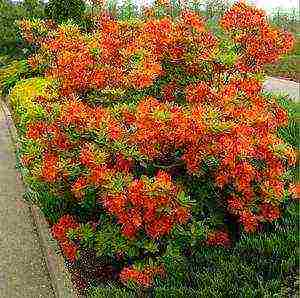 In landscape design, it is very important to choose the right elements for decoration. A bright and beautiful flower garden can always give a good mood, decorate the landscape. Rhododendrons are considered very popular, as flowering shrubs can turn any garden or recreation area into a beautiful and spectacular green islet.
In landscape design, it is very important to choose the right elements for decoration. A bright and beautiful flower garden can always give a good mood, decorate the landscape. Rhododendrons are considered very popular, as flowering shrubs can turn any garden or recreation area into a beautiful and spectacular green islet.
There are many varieties of rhododendrons, but how to choose the most frost-resistant varieties for your garden? It is believed that growing them in our climatic conditions is not easy. I would like to figure out which varieties of these bright flowers are better to use, capable of overwintering and taking root in our climate?
Luxurious plants
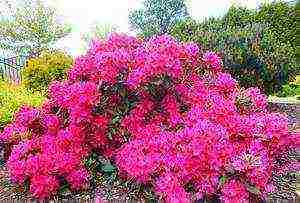 Rhododendrons are among the most popular and beloved types of flowering shrubs. They are trees or shrubs and can decorate even the most abandoned garden. There are over 800 species and subspecies of these fragrant plants. Among them there are ideal options for creating a unique design for a recreation area. Many gardeners in our country believe that it is not easy to grow a rhododendron in their garden. In fact, you need to make the right choice of varieties that tolerate our winters well and will be able to delight the eye with their bright, abundant color every spring.
Rhododendrons are among the most popular and beloved types of flowering shrubs. They are trees or shrubs and can decorate even the most abandoned garden. There are over 800 species and subspecies of these fragrant plants. Among them there are ideal options for creating a unique design for a recreation area. Many gardeners in our country believe that it is not easy to grow a rhododendron in their garden. In fact, you need to make the right choice of varieties that tolerate our winters well and will be able to delight the eye with their bright, abundant color every spring.
For the first time in European countries, rhododendrons were brought 160 years ago from South Asia. During this time, evergreen shrubs have become very fond of. Breeders have bred many new varieties that differ in a wide variety of shapes and sizes of bushes, color and color. These include thermophilic plants, but, unfortunately, they quickly die after harsh winters.
To avoid the death of the bush, it is necessary to select frost-resistant varieties of evergreen and deciduous species that can easily withstand low temperatures down to -35оС... Unlike thermophilic hybrid plants, it is easy to care for them, observing all agrotechnical rules for this culture.
The best frost-resistant varieties
With a wide variety of new species, gardeners can easily choose the right rhododendrons for their garden. This type of plant does not belong to exotic, therefore it is successfully grown in many countries with cold climates.
Evergreen winter-hardy varieties:
-
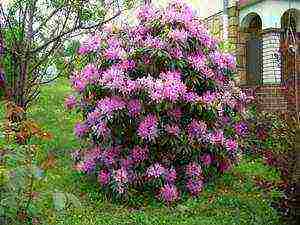 Grandiflorum is a shrub that reaches a height of 2 meters. It blooms with large lilac flowers.
Grandiflorum is a shrub that reaches a height of 2 meters. It blooms with large lilac flowers. - Smirnova is a lush green bush, it grows up to 1.5 meters in height. Its inflorescences are collected in 10-14 pieces and form beautiful buds, pale pink with yellow specks.
- Short-fruited - can grow up to 2-3 meters. The bush often blooms with large white flowers, reaching up to 5 cm in diameter. Under natural conditions, it is found in Japan, in the mountains of the Far East, Korea.
- Golden - is small in size, grows up to 1 meter. In inflorescences-umbrellas, its white flowers with a diameter of 5 cm are collected.
- Katevbinsky - is considered large, since it can grow up to one and a half meters. At the end of spring, it pleases with its large purple-pink buds, abundantly covering the bush.
- Dense, tangled rhododendron (impeditum) - its crown is extremely dense, the bush reaches a width of 0.6 meters. Branches are erect, densely branching. This variety has a faint flower aroma. They can be mauve, pale purple, purple-blue. The bush grows very slowly.
- Helliki (hybrid) - compact and dense, grows up to 1 meter, bright pink flowers, collected in inflorescences. It begins to bloom in the month of May and ends in June. Loves partial shade.
Deciduous winter-hardy varieties:
- Canadian - looks like a branchy shrub, reaching a height of 1 meter. Inflorescences, collected in 3-7 pieces, form beautiful flowers.
- Kamchatka is a small shrub that likes to grow in its natural environment on the mountainous slopes of the sea coast. It grows up to 40 cm, blooms with bright red flowers up to 4 cm in diameter, in the month of May.
- Yellow is a large shrub reaching a height of 4 meters and a girth of up to 6 meters. Umbrella-shaped small inflorescences have a pleasant yellow color.
- Japanese - has a spreading crown and grows up to 2 meters in height. Blooms in large flowers, collected in inflorescences of 6-12 pieces.
- Pukhkansky - refers to undersized rhododendrons, grows up to half a meter in height.Has a dense crown, blooms in May-June, flowers collected in inflorescences of 4-5 pieces.
Growing and caring
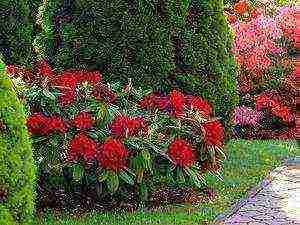 Rhododendrons prefer acidic soil, and even better peat. The soil substrate is prepared from a mixture of sand and sour peat in equal parts. It is desirable that the soil is loose and can pass moisture well. It is just as good to add chopped pine bark or coniferous needles into it.
Rhododendrons prefer acidic soil, and even better peat. The soil substrate is prepared from a mixture of sand and sour peat in equal parts. It is desirable that the soil is loose and can pass moisture well. It is just as good to add chopped pine bark or coniferous needles into it.
For a permanent planting site, light partial shade from large trees is suitable. Open sunny areas for growing rhododendrons cannot be chosen. Spring is considered the most favorable time for planting rhododendrons.
When landing, you must drain the soil, it will prevent stagnant water after watering. It is advisable to plant rhododendrons in containers, in which the root system is not damaged or dried out, therefore such a planting is more reliable. If planted without a container, then the plant cannot be buried deep. When the root collar is buried, it leads to decay of the root system.
The right place, careful maintenance and mulched soil will facilitate the further care of the rhododendron. In the springtime, it is recommended to make top dressing. Her choice will depend on the condition of the soil.
Very often, in the summer heat, the leaves on the plant become soft, so at this time it needs frequent watering. Drying out the root ball will be detrimental to the plant.
It is better not to get involved in pruning a bush, most often it is done as a sanitary one in March.
Frost-resistant varieties do not need shelter for the winter... Heat-loving varieties are sure to take refuge before the onset of spring.
When buying rhododendrons for your garden, you must always take into account the climatic conditions. Frost-tolerant varieties will be able to survive frosty winters more easily. Proper care of the plant will save you from unnecessary problems in the future. The shrub will actively develop, giving its delightful beauty and enchanting aroma to those around it for a long period of time.
Rhododendrons are one of the most spectacular ornamental crops grown by Russian summer residents. No wonder this plant of the Heather family is called a rose tree. In terms of beauty and elegance, the queen of flowers, rhododendrons are practically in no way inferior.
Key Features
There are only two conventional groups of rhododendrons: evergreen and deciduous. In nature, both of these types grow in areas with a rather mild climate - mainly in the humid highlands of Asia and North America. Therefore, only specially bred frost-resistant varieties are suitable for growing in central Russia. Heat-loving rhododendrons of Russian winters do not tolerate at all, freezing out, even being carefully sheltered for the winter.
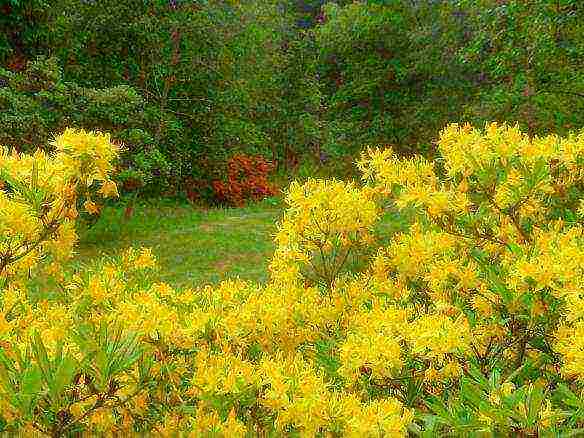
The best varieties for Russia
Very often, domestic summer residents grow evergreen rhododendrons in their plots. The frost-resistant varieties of this variety are actually extremely popular. After all, they are able to decorate a courtyard or garden all year round. In particular, reviews praise evergreen species and varieties:
-
Katevbinsky (Rh. Catawbiense);
-
Hellicki;
-
Mikkeli.
Flowering deciduous rhododendrons can also become a good decoration of a suburban area. Frost-resistant varieties in Moscow, the Urals, Siberia, etc. can be grown in different ways. But the most popular among Russian summer residents are still deciduous rhododendrons of the Northern Light group, such, for example, as:
-
Spicy Lights;
-
Tri Lights;
-
Rosy Lights etc.
Also in summer cottages, Japanese rhododendrons (Rh. Japonicum) and yellow (Rh. Luteum) are very often grown.
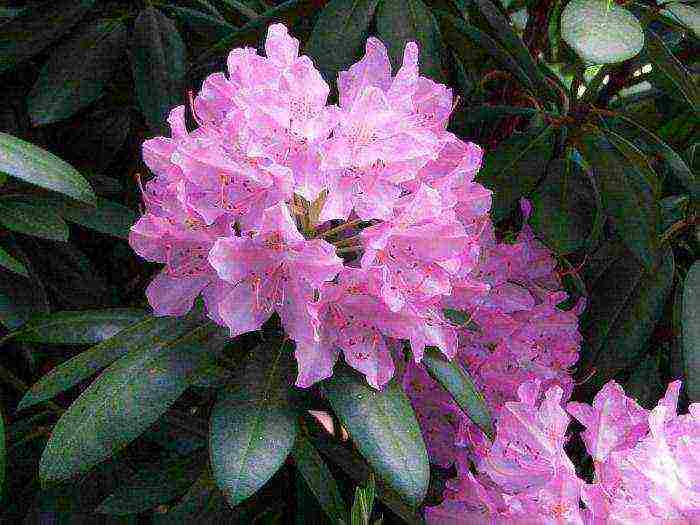
Katevbin rhododendron
This species, according to the majority of Russian summer residents, is the most beautiful rhododendrons. Frost-resistant varieties of the Katevbinsky group are rather tall shrubs (2-4 meters) with a dense semicircular crown. The leaves of the plants of this series are slightly elongated, large (up to 15 cm in length and 5 cm in width).Katevba rhododendrons bloom from May to June. And in fact it is very beautiful. Their rather large flowers are collected in lush inflorescences and resemble bells in shape. The shade of the petals can be different depending on the variety. Both purple and purple or white flowers of this variety are very beautiful.
Helliki rhododendrons
A compact crown and lush bloom are what makes these rhododendrons different. Frost-resistant varieties often lose a little in showiness to heat-loving ones. This does not apply to the Hellicki rhododendron, which can withstand the lowest temperatures. The leaves of this variety are very beautiful - they are distinguished by a bright green color, and on the lower side they have an edge. Helliki blooms in mid-June. The buds of this variety are also heavily pubescent, and therefore look "felt". The flowers of this variety are collected in spectacular groups, have a funnel shape and a beautiful purple-red hue with orange specks. One of the features of the care of Helicki rhododendrons is the need to remove all dried brushes. If the owners of the site for some reason forget to do this, the plant may not bloom next year.

Rhododendrons Mikkeli
This Finnish hybrid combines two qualities that are important for any ornamental plant - a spectacular appearance and unpretentiousness. Its buds are red, and the flowers have a pale pink hue, gradually changing to white. Old leaves of the variety are pubescent. A feature of this hybrid is not too abundant flowering of young bushes.
Northern Light varieties
This group of rhododendrons includes several complex American hybrids. The title of the series is translated into Russian as "Northern Lights". The advantages of these varieties, Russian summer residents include, first of all, the ability to easily withstand frosts even down to -35 ... -40 degrees. Most Northern Light hybrids bloom from late May to late June. Their flowers are not too large, but very fragrant. The color of the petals can be cream, white, pink, golden or lilac. The main features of Northern Light hybrids include rapid development, the ability to bloom at a very early age, and shade tolerance.
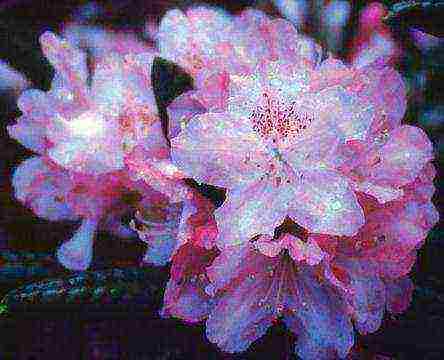
Japanese rhododendrons
The best winter-hardy varieties of rhododendrons discussed above are very beautiful. But outwardly, they are more or less similar to each other. Japanese rhododendrons stand apart in this group of ornamental plants. They look truly luxurious. The main distinguishing feature of the Japanese rhododendron is its very strong branching. This plant blooms from May to June. The bush can reach a height of 1.5 meters in nature, in a garden plot - no more than 80 cm. The leaves of the Japanese rhododendron are unusually beautiful - oblong, bright green. Their upper side is covered with hairs. Flowers in all varieties of Japanese rhododendron are very large (6-8 cm), collected in lush brushes and are distinguished by bright colors. The shade of the petals can range from deep red to cream.
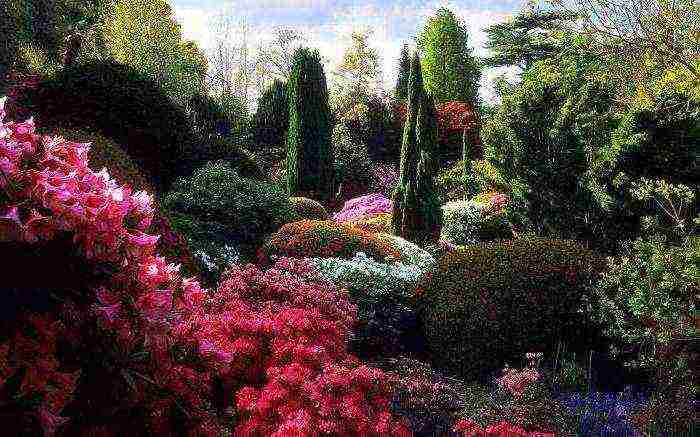
Rhododendron yellow
This species is called in another way the Pontic azalea. According to reviews, in personal plots, yellow rhododendron should be grown only for those summer residents who do not have small children and pets. The fact is that this variety is a poisonous plant. The main distinguishing features of this group of varieties include a spreading crown and a pleasant aroma of flowers. In height, the yellow rhododendron can reach two meters. His appearance is very effective. Large fragrant flowers are collected in dense clusters, and the leaves have a bright green saturated hue.
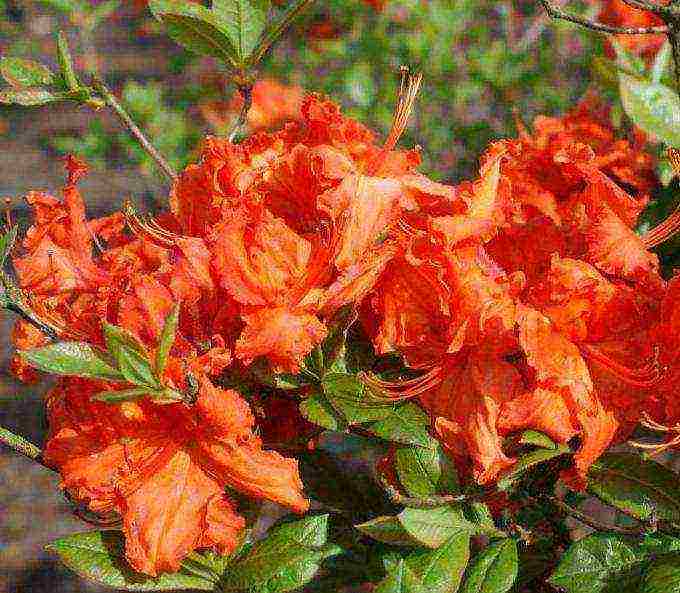
How to choose a place on the site
These are the rhododendrons grown in most cases by domestic gardeners. Frost-resistant varieties, the price of which is quite high (about 500-700 rubles per seedling), however, require careful care.First of all, you should choose the right place for plants. Most rhododendrons are sun-loving plants. However, with constant exposure to UV rays, burns can appear on their leaves. According to reviews, the best solution would be to plant the rhododendron near a tree, so that it is slightly shaded. These plants do not tolerate strong winds. Therefore, on hills, in places unprotected from the constant movement of air masses, it is not recommended to plant them.
What should be the soil
The best soil composition for rhododendrons is considered as follows:
-
leaf land - 3 parts;
-
coniferous soil - 1 part;
-
high-moor peat - 2 parts.
A high level of groundwater is what these plants really dislike. Frost-resistant varieties grown in Russia feel much better in drained areas.
How to plant
Not too deep holes are made under the rhododendrons on the site - about 50 cm (without drainage). Before planting, the roots of plants must be soaked in water for a day, along with an earthen lump. The distance between the bushes is maintained depending on the height of the variety. For undersized rhododendrons, this figure is 50 cm, medium - 1.2 m, high - up to 2 m.
Plants are planted so that their root collar is located on the surface. If it is deepened, the owners of the suburban area will not wait for the flowering from the bush in the future.
The soil under the planted rhododendron should first be thoroughly shed. Then the near-trunk circle is mulched with sawdust, moss or peat with a layer at least 5 cm thick.
How to properly water and fertilize
Winter-hardy rhododendrons, the types and varieties of which we have considered above, will delight their owners with beautiful flowering, of course, only with proper care. Summer residents recommend feeding these plants twice a year: after the snow melts and after flowering. Slurry is usually used as fertilizer (0.5 liters per 10 liters of water). Rhododendrons are often watered, preventing the soil from drying out in the near-trunk circle.

Frost-resistant rhododendrons and wintering of bushes in the Russian climate
In autumn, it is advisable to bent the branches of plants to the ground. Subsequently, they are covered with snow. You can also make spruce branches over the bushes. However, these procedures are not at all mandatory. All frost-resistant varieties endure Russian winters even without shelter.
Conclusion
Thus, we have examined in all details what kind of plant it is - rhododendrons (frost-resistant varieties, price, cultivation are now known to you). As you can see, these beautiful original ornamental bushes require constant care. For those summer residents who do not have time to regularly visit a suburban area, reviews are not recommended to plant rhododendrons. Without regular watering, these plants will simply dry out quickly and money on seedlings will be wasted.
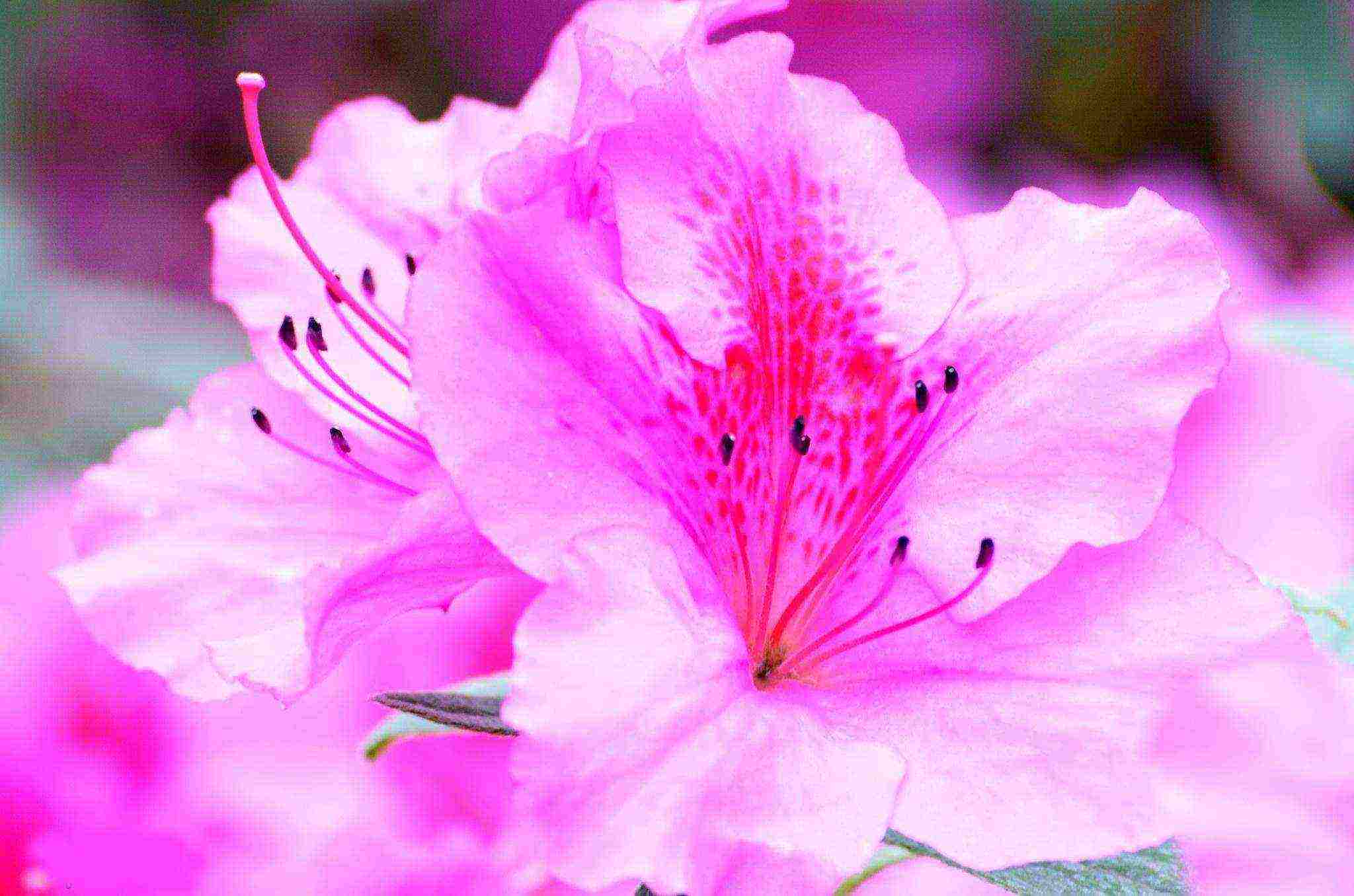
This plant is able to revive and decorate the most unsightly and abandoned area: bright and unusual, luxuriantly blooming, it has earned the unofficial status of the most popular tree among gardeners. It looks quite exotic and one might think that this beauty is unlikely to take root in our northern latitudes, but there are rhododendrons, frost-resistant varieties of which were bred by breeders specifically for our area.
Rhododendron for your garden
The number of frost-resistant varieties of this plant is more than 10 items, among which you will definitely choose a suitable specimen for yourself. Rhododendron varieties can be divided into 2 categories: evergreen and deciduous, they also differ in appearance (tree and shrub) and in the shade of flowers.
Frost-tolerant evergreens:
- Rhododendron Smirnov.It grows in the south, in Adjara and Turkey, but is not afraid of frost, a lush shrub, reaching a height of 1.5 m, forms inflorescences of a pale pink shade with yellow blotches.
- Short-fruited - Far Eastern plant, found in Japan, Korea, Kuril Islands. A tree growing up to 2-3 m, blooming with large white flowers.
- Golden - Siberian, grows in the Far Eastern regions, often found in Altai. Forms inflorescences in the form of umbrellas of white large flowers.
- Katevbinsky is a one and a half meter shrub, covered in spring with frequent lilac buds.
- The largest rhododendron is a sprawling shrub that achieves a spectacular appearance due to the width of the branches, they can grow up to 6 m. Low - 1.5 m.
Frost-resistant deciduous plants:
- Canadian - this rhododendron bush is branched, but quite compact, its parameters are 1x1m. Found naturally in eastern North America. Forms inflorescences of 3-7 pieces.
- Kamchatka, natural habitat - mountain coastal slopes. Stunted, the bush rarely reaches a height of more than 40 cm, the flowers are bright red.
- Yellow (Caucasian). The habitat of this shrub is the forests of the Caucasus and Transcaucasia, the bush looks more like a branchy tree, reaching a height of 4, and a width of 6 m. Flowers are small yellow.
- Japanese is a two-meter shrub with a spreading lush crown, forms very large flowers (up to 8 cm), collected in inflorescences.
- Schlippenbach's rhododendron is a medium-sized, spreading bush with large pink flowers.
- Puhkan rhododendron - undersized bushes up to 0.5 m tall, but with a very dense crown and large flowers.
- Rhododendron Vaseya is an inhabitant of the North American continent, a rather tall shrub, reaching 2.5 m. Pink flowers with small interspersed with a darker shade. Flowering time: late May - early June. This variety turned out to be the most optimal for creating other frost-resistant rhododendron varieties on its basis.
What rhododendron to plant in a courtyard near Moscow
You can choose any plant you like. All of them tolerate winter well, are little susceptible to disease, and have a beautiful appearance. Taking into account the unstable weather conditions in our region (either winter is too harsh or too mild), it is advisable to choose varieties bred in the USA (Northern Ligh group), which perfectly tolerate temperatures and from -350C to + 300C.
As for planting and caring for rhododendrons in the Moscow region, you need to know some of the nuances, although the plant is not considered too picky. But every green pet should receive its share of attention from the gardener - otherwise there is simply no point in hoping for a wonderful blooming result. It is important to know the answers to some questions:
When to plant
The optimal time for planting seedlings with an open root system is spring (March), if the root of the tree is closed, the planting process can be carried out at any time from April to October, this will not negatively affect the plant.
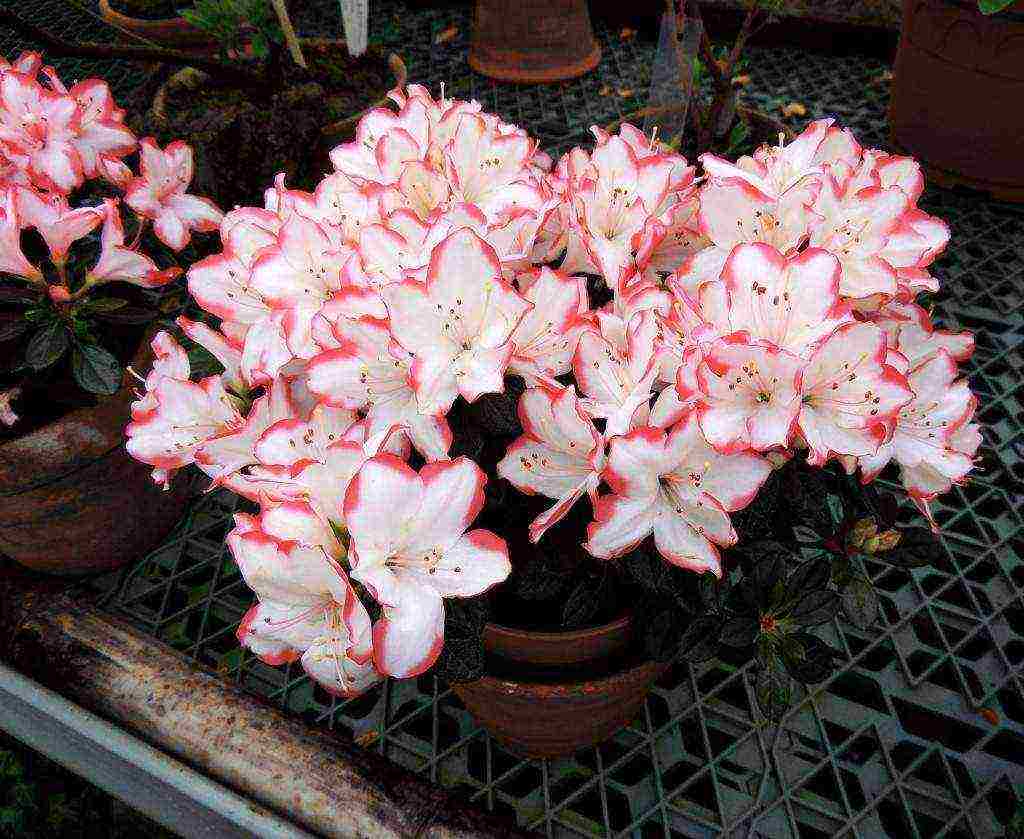
How to water
The constant maintenance of soil moisture is one of the most important conditions for caring for rhododendron. During watering, at least 2 liters must be poured under each plant. water and additionally spray the leaves.
How to care for spring
Inexperienced gardeners are often confused by the question of when, how and what to feed the rhododendron. We answer: feeding is included in the complex of spring plant care. Rhododendrons are fed with a special fertilizer for azaleas or mullein solution. The number of dressings is two. The first, immediately after the snow melts, the second - after flowering. Do not worry about how to feed the rhododendron during flowering - during this period it does not really need feeding, although it gives all the power to the flowers. The plant has enough microelements obtained during the first feeding.
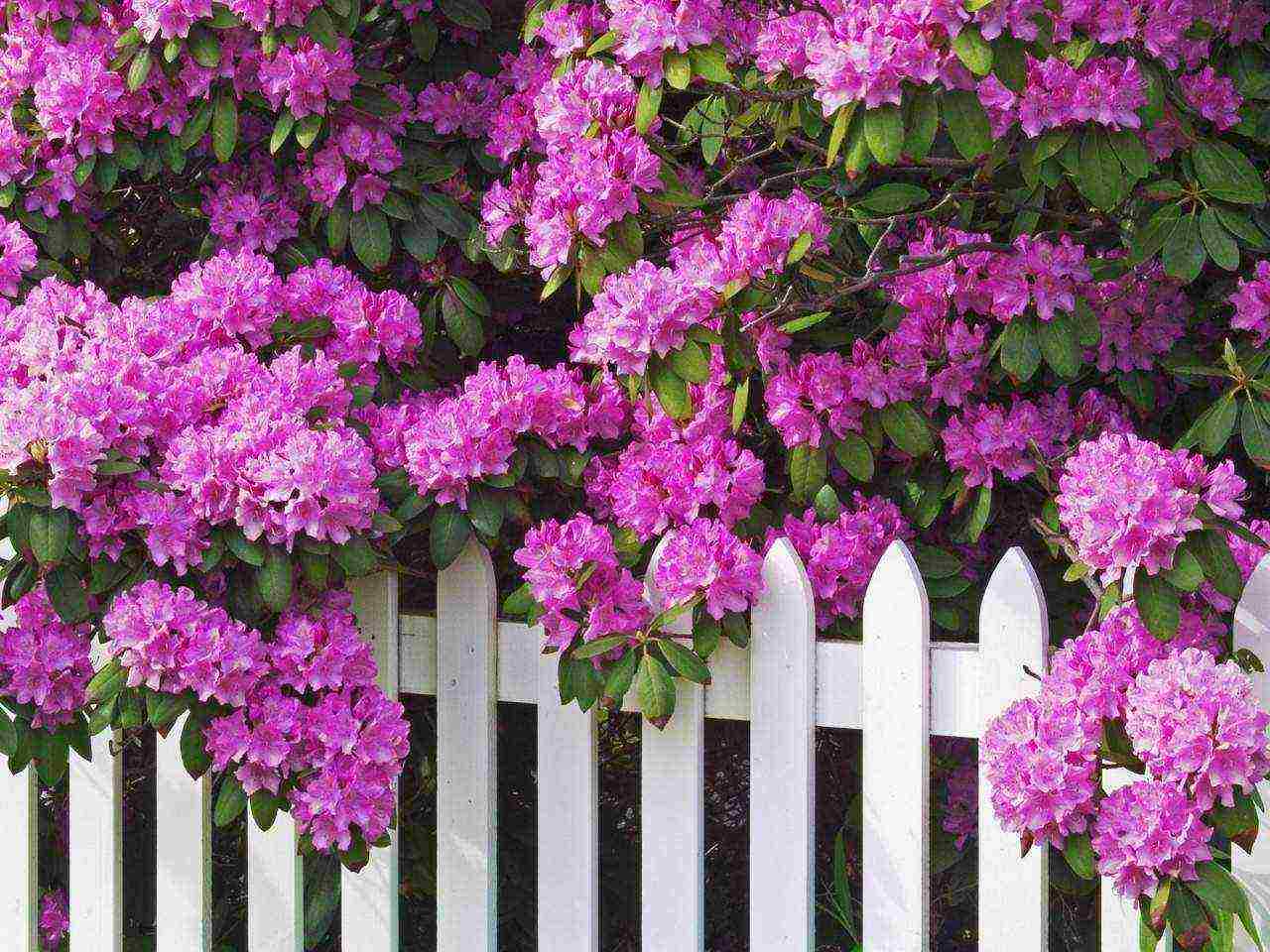
Do not leave your shrub unattended when it has somewhat lost its beauty (faded).Its leaves are very affected by direct sunlight, therefore, if the rhododendron is not covered by taller plants, it is necessary to create a shade for it.
How to care for the fall
The autumn complex of work on the care of rhododendrons includes the renewal of mulch, the addition of acidifying materials: bark, wood chips, needles, humus and watering before sheltering for the winter. As for pruning branches, it is not necessary to do this, unless they have outgrown the boundaries of the territory allotted for them. Pruning rhododendrons after flowering is also optional, but you can do it for aesthetic reasons - just remove the ugly dry buds.
How to plant and replant
At first glance, such a simple process as planting a rhododendron is a whole science, which consists in the ability to choose the right place for a plant by the type of soil, by location with neighboring plants, by the level of comfort conditions for the rhododendron itself.
How to plant a rhododendron so that it quickly takes root, grows and, preferably, blooms in the first year? Is it possible for such a miracle as the flowering of a first year, in general? It is impossible to confirm this, just as it is impossible to deny it. A plant is an individual organism that subtly reacts to conditions and care. If it is good for him, it blooms, if it is uncomfortable, it does not bloom.
The standard requirements for a correct planting process are:
- make a shallow landing pit 50 x 70 cm;
- pour some gravel for drainage (10 cm layer);
- fill the pit with a substrate of leafy soil (3 parts), peat (2 parts), forest litter (1 part).
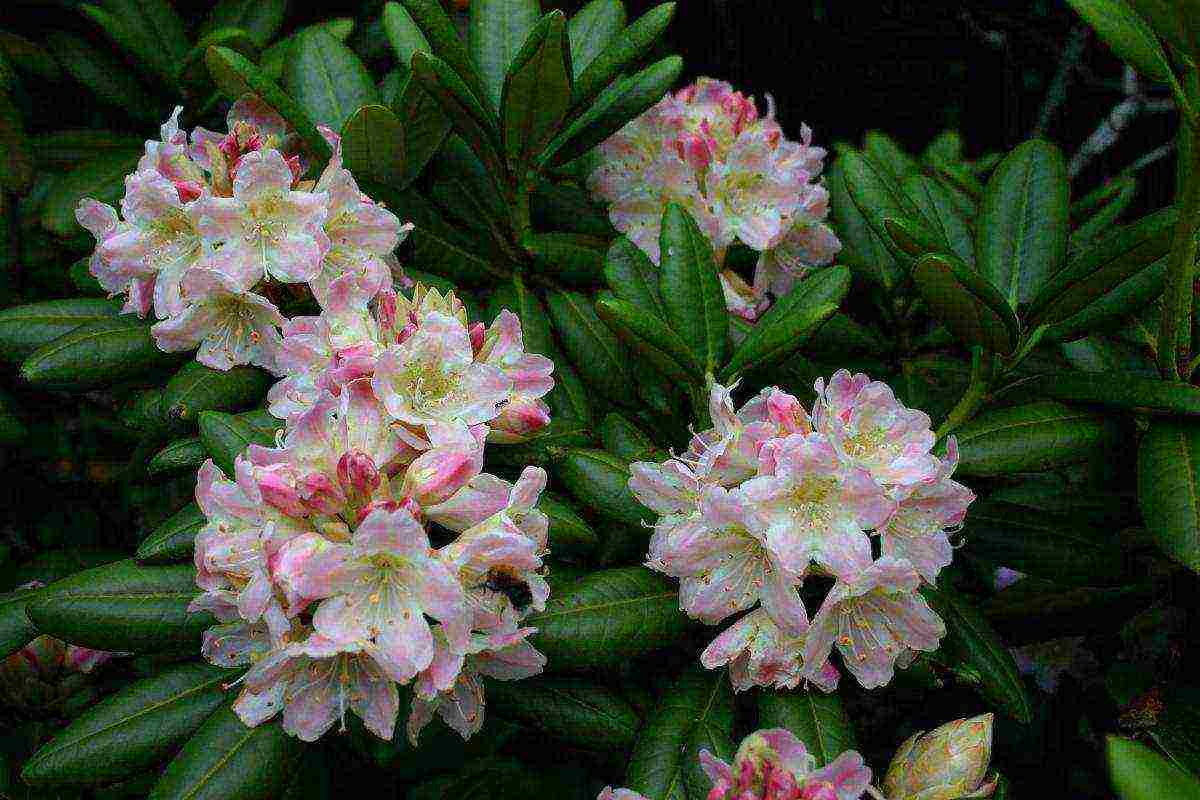
Before planting rhododendron, it is necessary to saturate the root system with moisture in reserve - leave the plant for 24 hours in a container with water. After planting, the plant requires mandatory watering, despite the fact that it was wet all day.
In the spring, when you can transplant rhododendrons without fear for them, also adhere to the basic rules: start a transplant when the deciduous buds are just swelling or after flowering.
Winter period
The main question of amateur gardeners that arises in late autumn: how to shelter rhododendrons for the winter? There is a significant difference in preparation for the winter period of evergreen and deciduous varieties: evergreens need moisture-charging watering, since they are more afraid of a lack of moisture than frost, and deciduous ones are not so demanding on moisture.
Evergreen rhododendrons are first put on a rigid frame, and then covered with a dense non-woven material. Deciduous are bent to the ground and covered in the usual way.
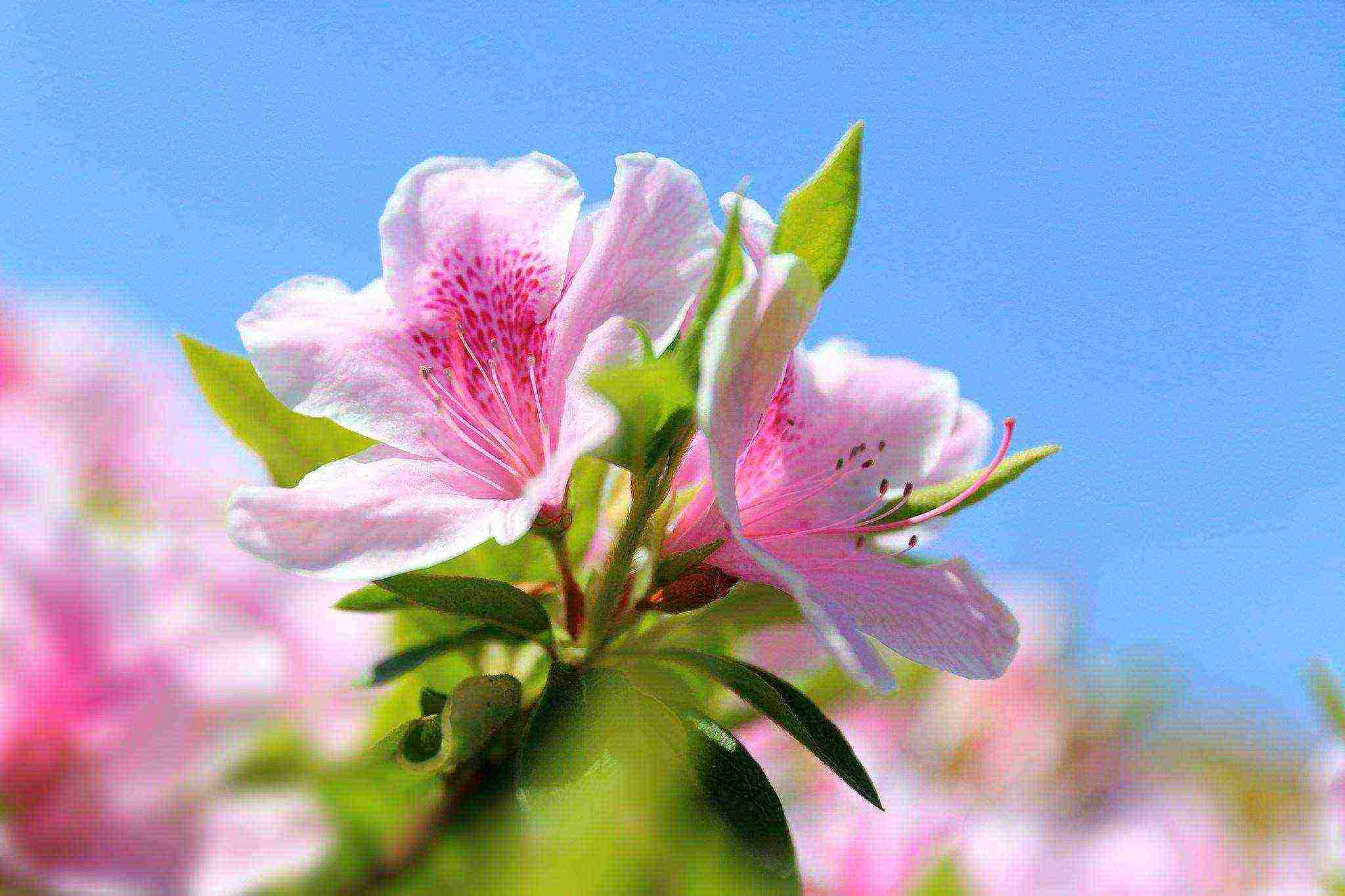
Evergreen rhododendrons have one feature that scares gardeners who have not encountered this plant before: at temperatures below -10C, its leaves curl into tubes. This is how the plant protects itself from winter dehydration. At the first warming, the leaves will take on a normal appearance.
Few facts about rhododendrons
You should not plant rhododendrons next to roses - these plants require a different soil composition, and the fact that the rose is good, the rhododendron is unlikely to like it.
Do not plant the plant in areas open to the wind - evergreens and some varieties of deciduous rhododendrons will suffer greatly from constant drying out.
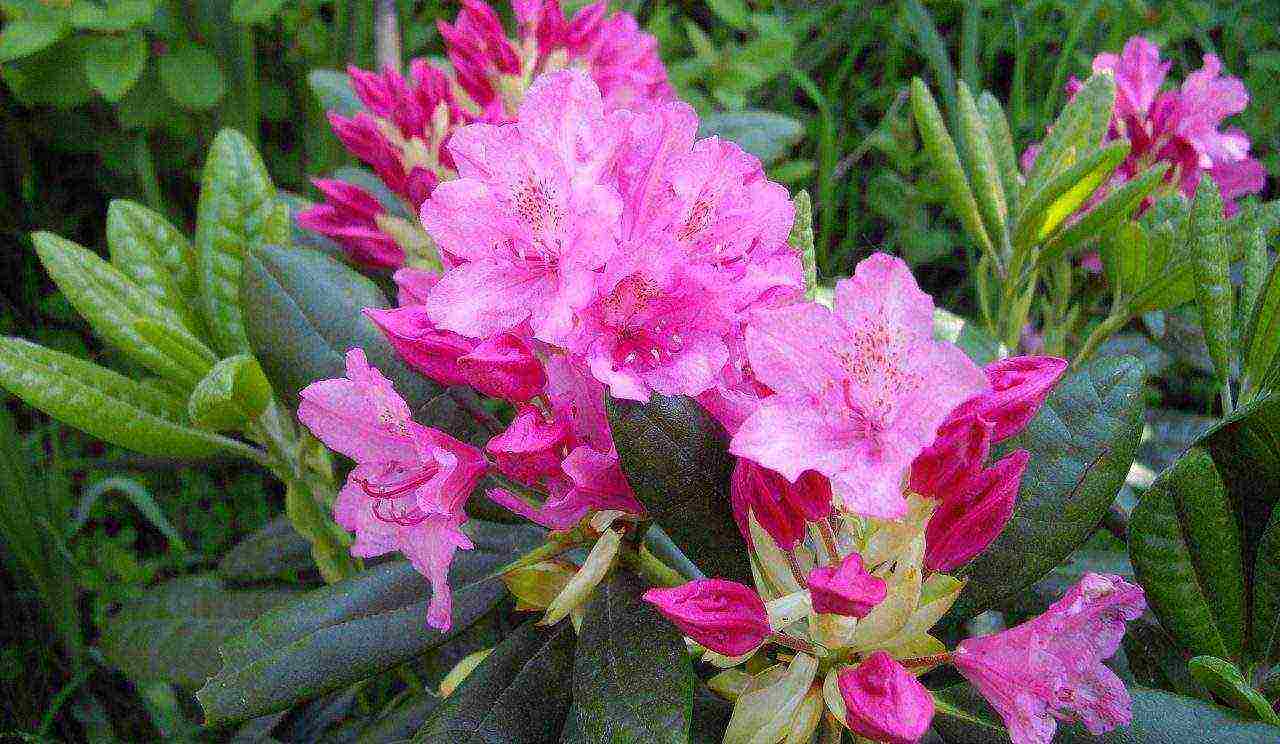
Evergreen rhododendrons prefer partial shade and scattered sunlight, deciduous varieties feel good in the sun.
Planting and caring for a rhododendron involves placing the plant on a hill and good drainage - these mountain plants love moisture, but do not tolerate stagnant water.
Join the discussion!
We would be interested to know your point of view, leave your opinion
in comments
😼
